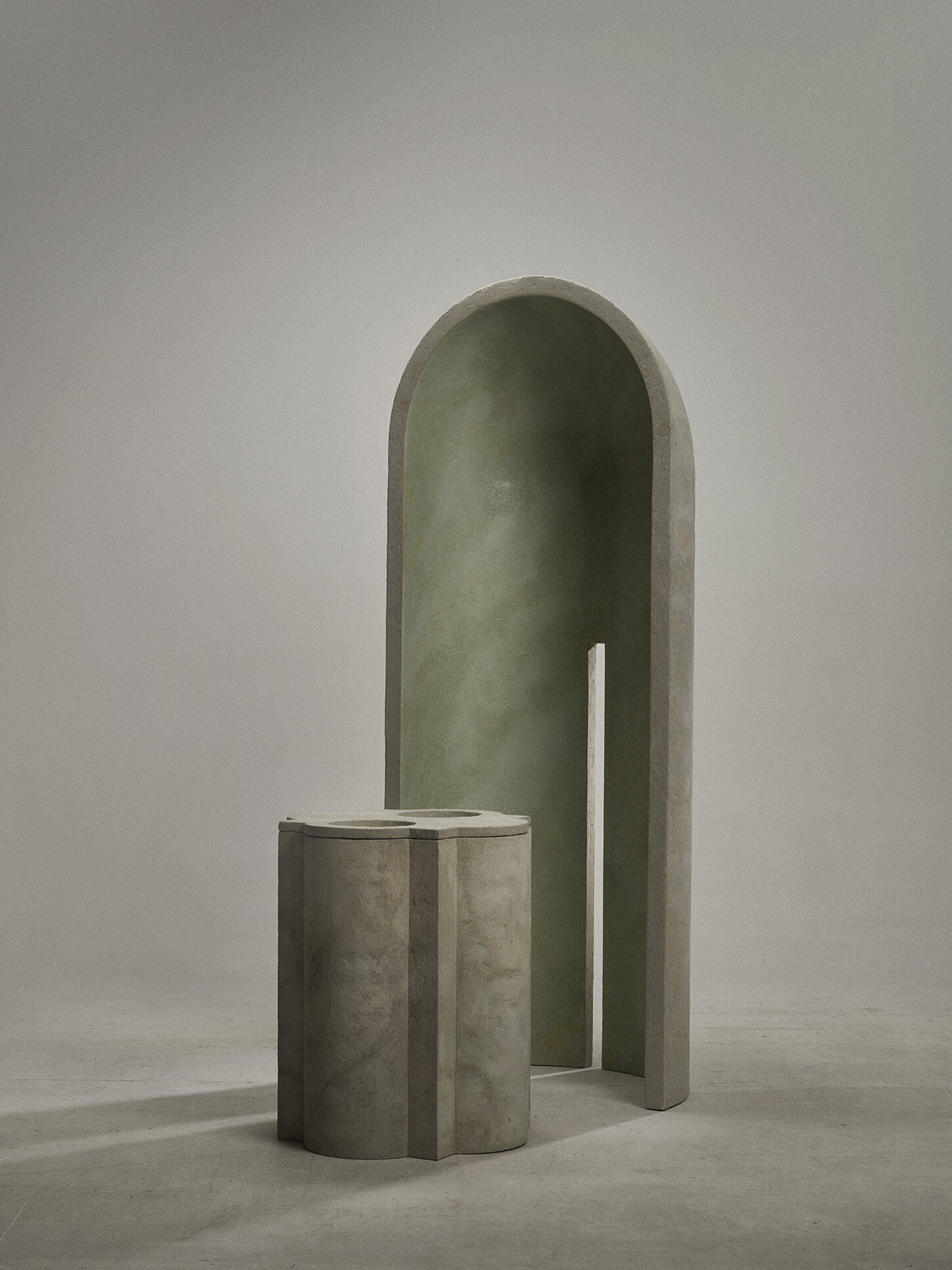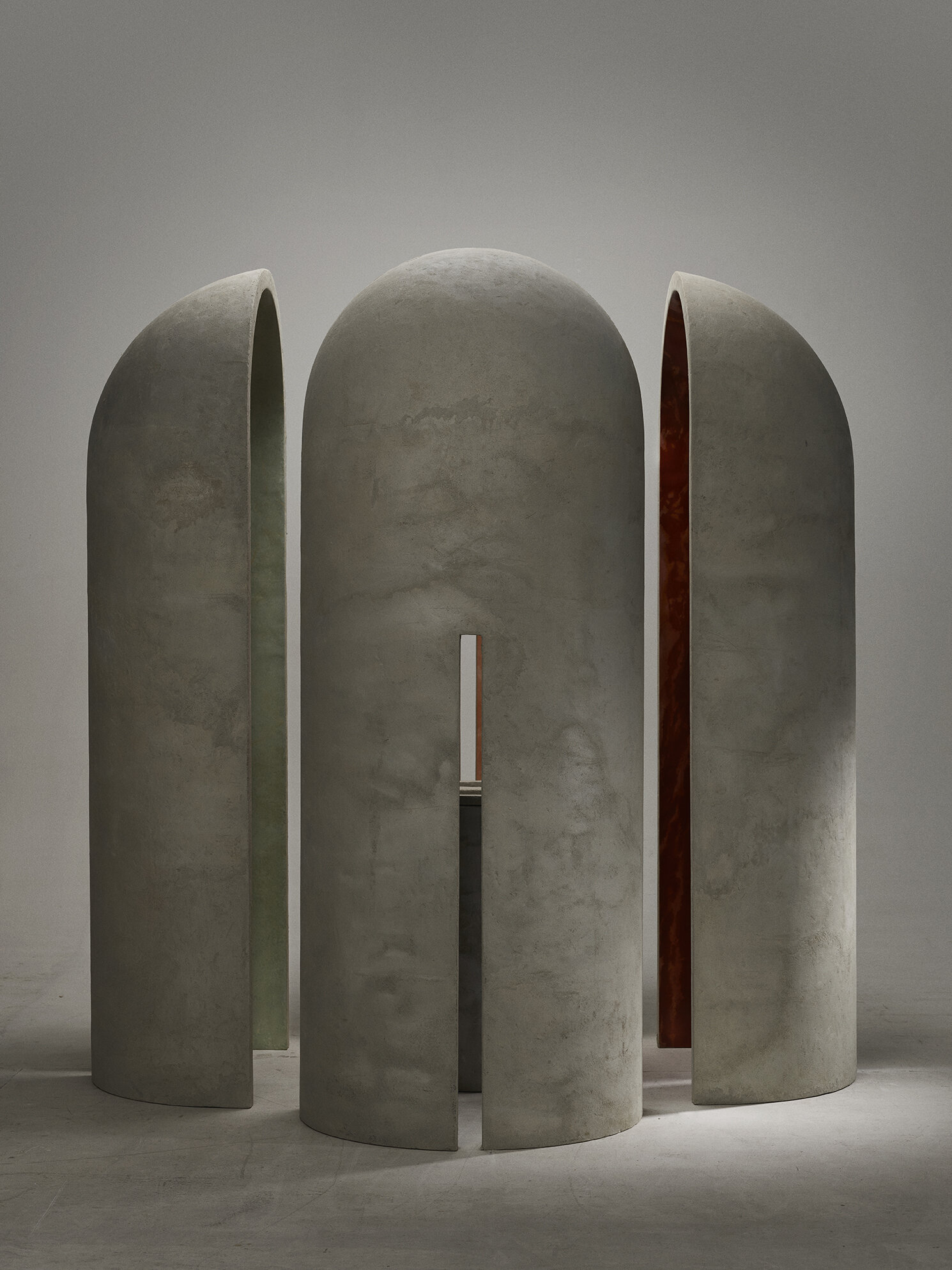
The architecture of a tea ceremony









THE ARCHITECTURE OF A TEA CEREMONY - IN SITU FOR SCHLOSS HOLLENEGG FOR DESIGN
During her residency in Schloß Hollenegg for Design, Nel Verbeke reflected on the idea of Ad Mensam– the chosen motif for the 2019 exhibition in the castle. As a result of her in situ research, Nel Verbeke proposes a re-introduction of a tea ceremony as a permanent possibility, to be performed within a dedicated environment in one of the castle’s rooms: The Architecture of a Tea Ceremony.
The Architecture of a Tea Ceremonyis, in this case, both a collective ritual – a performative sequence of gestures – and a physical design, guiding its users to inter-action and contemplation, temporarily freed from the usual concerns of everyday life and allowing them to embrace (or: consciously deal with) the emotional ambivalence of their emotions.
The design consists of a sculptural structure whose domed shape repeats the arched ceiling of the room and emphasises its capacity to seclude; its play with light and shadows. The four sides can be separated, revealing habitual spaces (refuges) where one can be seated. The interiors of these four seating elements are all coloured differently – referring to the four seasons and to the cycles of life: both a cosmological and a humanistic association. Their faux marble inner walls cite the recurring application of this technique in the castle’s interior. Central to these four elements and sheltered by the domed structure stands a static element: an altar for the ritual, a point of concentration and interconnection.
With her design, Nel Verbeke questions the future perspectives of rituals and traditions; in relation to her ongoing research on the emotional potential of design on the one hand and to the unique character of Schloß Hollenegg on the other. The choice for the specific castle’s chamber – from now on named as the Tea Ceremony Room – was made in dialogue with Alice Stori Liechtenstein as a part of the residency. It now completes a row of rooms in the castle, each with its own characteristic purpose and appearance.
